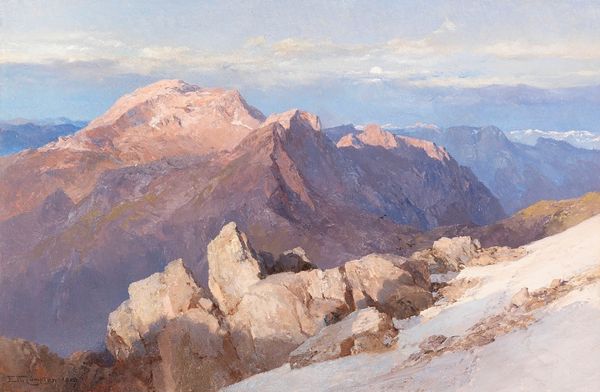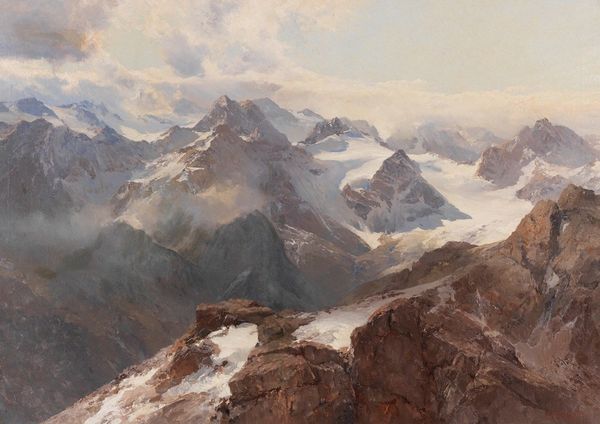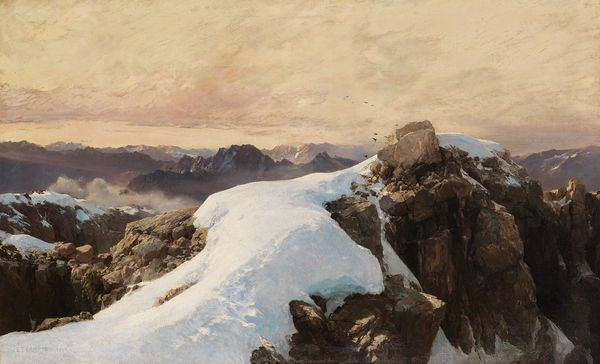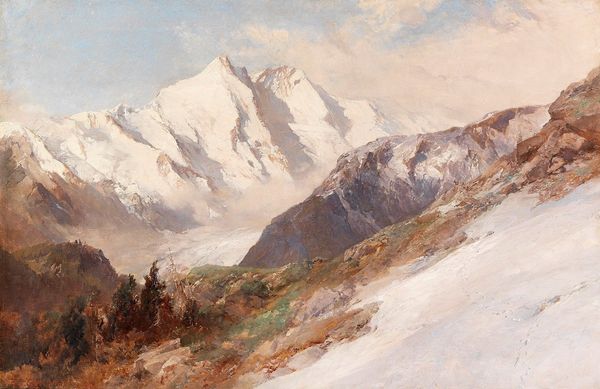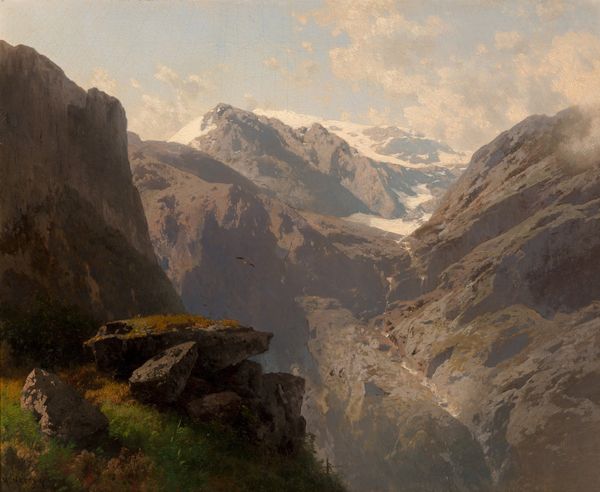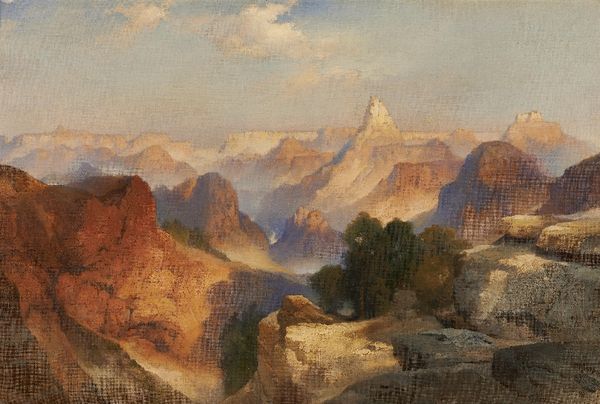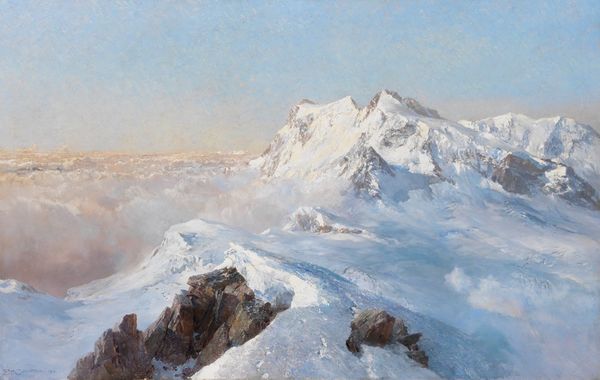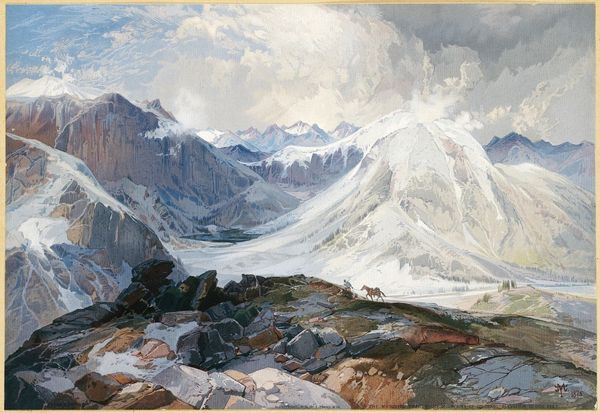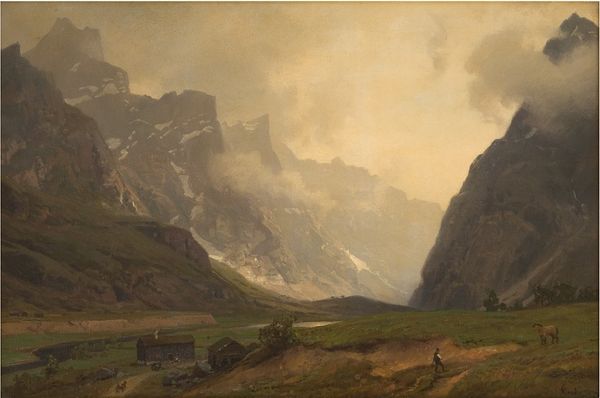
A View of Crozzon di Brenta from Cima Tosa with Pilastro dei Francesi 1917
0:00
0:00
Copyright: Public Domain: Artvee
Curator: Edward Theodore Compton painted this striking oil on canvas, titled "A View of Crozzon di Brenta from Cima Tosa with Pilastro dei Francesi", in 1917. What captures your eye first? Editor: The dramatic lighting! The way Compton manipulates the contrasts between light and shadow really emphasizes the monumentality and ruggedness of the mountain. It has a palpable, almost sublime, presence. Curator: Indeed, Compton's mountain paintings must be considered within the burgeoning culture of alpinism and the visual representation of the Alps in the late 19th and early 20th centuries. The Alps were more than a physical space; they were becoming potent symbols of national identity. Editor: You see a political backdrop; I am stuck on how skillfully he evokes depth with atmospheric perspective. Notice the muted blues and greys he uses to paint the distant peaks? That gives such a realistic sense of recession, pulling you into the scene. The crisp, clean white snow against the raw rock of the foreground is another strong visual effect. Curator: The romantic undertones, combined with what appears to be plein-air techniques, offered the viewers of his time what they wanted—apparently untouched nature through this kind of scientific accuracy. But this also spoke to something else, a desire for escape during a period of immense social and political upheaval, most obviously symbolized by the first world war. Editor: Do you feel the color palette choices contribute or detract from the idea? I am wondering what to think about how he went for reddish, even bronzy hues for the main cliffs rather than cooler, grayer tones one might expect at this altitude. Curator: Interesting that you ask this. While there is indeed much discussion and debate about landscape art, including debates on ideal color representation of natural forms, one can never discard its potential role as a form of national projection, where one has to remember, particularly during war times, what one is fighting for. Editor: Perhaps, it does have a strong emotional quality that moves past objective realism. I do wonder how intentional all that was in the process... Curator: These landscape paintings become cultural commodities in their own right. It is worth keeping this context in mind to realize what landscapes mean and have meant. Editor: It’s always rewarding to explore the interplay of technique and context in works like this. The visual impact coupled with a socio-political reading provides much more nuance than the surface offers.
Comments
No comments
Be the first to comment and join the conversation on the ultimate creative platform.
